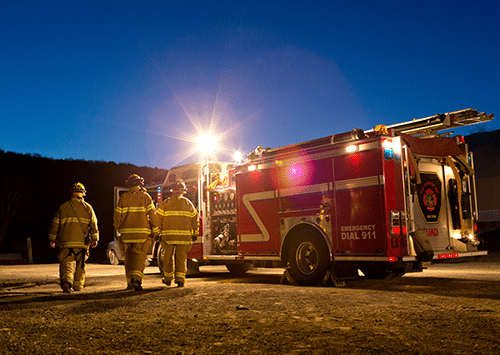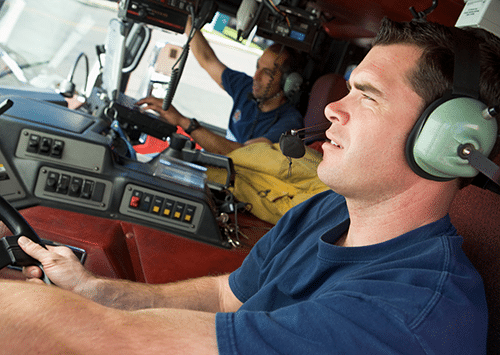August 10, 2017

Top 5 Fire Training Scenarios for the Effective Firefighter
Industry:
Solution:

An ongoing debate endures over whether money buys championships, a concept that can be applied to many of life's little nuances. But the reality is what good is having the best that money can buy if you're not prepared to properly use it? The same could be said for a firefighter's training program. Your training grounds may be packed with the most pristine resources available, but like a last-place ball club with a skyrocketing payroll, your gear is only as good as the plan you develop for using it.
Scenario-based training for firefighters is a must for preparing your battalion, executing successful operations, and saving lives. Paul Costello, FF/EMT-P and certified fire service instructor, recently sat down with us to discuss a few fire training scenarios that can help prepare your cadre for the real thing.
1. EMS Training
Commonly known as one of the Toxic Twins, hydrogen cyanide is a chemical compound found in most working fires that effectively blocks the body's cells from accepting oxygen. Implementing EMS into your program is one of the most valuable types of fire training scenarios that will prepare your battalion for tackling chemical inhalation, injuries, burn wounds and more. Costello discusses this further while referencing cardiovascular incidents leading to line of duty deaths; "Cyanide and its other twin carbon monoxide become a cardiovascular drag. If you already have a degree of heart disease that you didn't realize, now you're suddenly further impairing it, which is one of the known triggers of these line of duty cardiac arrests that occur during or after a fire." Learn more about EMS training.
2. SCBA & PPE
Complacency is an all too familiar foe when it comes to reviewing and mastering the basics. How to don your gear with speed, the rules of air management, knowing how much air your body expends, and when to remove yourself from a fire are all fundamental necessities that every firefighter must review with a degree of regularity. "Regardless of discipline, going back to the basics is imperative and the fundamental knowledge could use a boosting from time to time," commented Costello.
3. Truck Company Operations
Truck company operations are vital to any firefighting effort. Aerials and master streams, operated by specialists called "truckies," offer the opportunity to maintain strategic holds on building fires and provide incident command with succinct control of the flow path into the structure through their ventilation efforts. It comes down to skillset, orders from incident command, and not getting trigger happy with those 1,000 GPM master streams. Said Costello, "One alarm fire means you're going to have X amount of engines, we'll say three; a truck company, aerial or ladder, rescue, battalion chief or two, an air truck. Everything complements one another." Learn about training for truck company operations.
4. Live Fire Training & Flashover Simulator
Whether it's live fire evolutions in the tower, a burn room or a flashover simulator, all three scenarios serve the invaluable purpose of prepping firefighters for the real thing. Thermal dynamics, fire behavior, reading and controlling a fire are all beneficial for rookie firefighters and veterans alike. When structures start to burn at 1,100 degrees and you're surrounded by super-heated gas, relying on your training could save your life. Relayed Costello, "What it does is prepare the firefighter for the behavioral nuances experienced inside a burning structure. Adult learners master by doing, actually seeing that things are improving or getting worse and if they're getting worse, what can they do?"
5. Tower Training
Physical agility, simulated high-rise drills, and live fire evolutions are just a few of the training exercises that towers provide. Each building takes on its own personality and unique architecture in providing important training exercises to battalions across the country. The ultimate game changer, Costello praised tower training for its versatility and value; "For the average firefighter who isn't part of a specialized team doing high angle rescue, it's a confidence builder in trusting your equipment and team and the basics of why we do this type of safety training."
TargetSolutions offers a variety of interactive online training courses of the aforementioned fire training scenarios, plus a plethora of other topics. Manage your entire department's training, simplify ISO, and stay on top of EMS recertification all from one centralized hub. For more information, please contact us today at (800) 840-8048.
Paul Costello is a veteran paramedic, firefighter, fire service instructor, and TargetSolutions subject matter expert who has assisted in the development of numerous fire-related training courses. He played a pivotal part in the direction and production of TargetSolutions' 1410 Evolutions training bundle, a 14-course video-driven series that was shot on location with the St. Charles Fire Department in St. Charles, Missouri and Pasco County Fire Rescue in Land O' Lakes, Florida.
Firefighter Continuing Education Training
TargetSolutions features more than 450 hours of training for fire departments. Courses are based on the NFPA codes and standards, including NFPA 1001, NFPA 1021 and the NFPA 1500 Series. Courses also cover wildland fire, response to terrorism, and much more.
Explore our software solutions designed to help your organization succeed
Request a Demo






